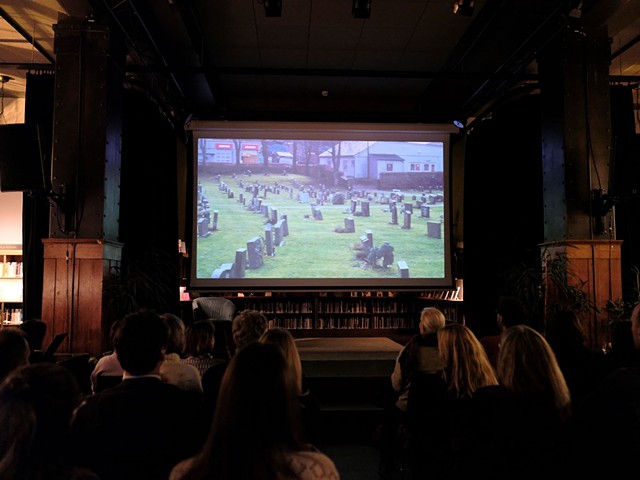Public Art Projects
Deep breath in, then scramble beneath the earth. To visit the bones, the cloth, the wood, hair. Remnants. Seeping into the groundwater, drunk and pissed out and drunk again by generations.
Particles travelling through bodies or left in place to become part of the same earth.
Memorial stones set in their neat rows and grids, taken for material, smashed, crushed and buried in foundations. Gravestones and memorials reused. Cannibalized. Taking the stones from one civilization to build another: vandalism. Taking the stones from the recentish dead, erasing their names: common sense. We need the space! Cemeteries are gross!
If they were slightly older or newer it would be barbarous, an erasure of culture a sacrilege.
The bodies left stacked neatly side by side and on top of one another to silently collapse together. Each year one or two go rogue. Bones heave up out of the ground, animal and human mixed. With the gravestones gone: Animals and humans are left with equal care and equal disregard. Equally forgotten. Erased class, race, sex, age. Stripped of memorials. The names no longer traceable, histories erased. A generalized mass of bone and remnants. Relatives stripped of individuality, ancestors erased, no memorial, no past, no record.
Not moved or removed, just made invisible. The dead have no rights, mourned for a few years then forgotten in the ground. With the animal bones mixed in, mass graves for animals slaughtered packed tightly next to families stacked up and up, one layered on top of the next gently melting together.
These are voiceless dead, the erased. All cities are built on the bones of the dead. Their tombs paving roads and laying foundations for houses and counter tops. Bones as scaffolding deep in the walls of underpasses, carparks and reservoirs.
I grew up running on plague pits, the only clear space without trees or buildings to fly a kite. The tug on the string was visceral, alive. For a moment an invisible force fighting against the tether before releasing, allowing the kite to plummet back to the ground.
It always felt a little wrong, playing on graves, picnicking. Maybe dangerous as if even trees wouldn’t grow out of the sickness in the ground. We knew they were there, lurking, tumbled in their hundreds. In the back of my mind, perhaps a hand would reach up from the ground or a bubble of contagion burst and seep into the air to drag us down into the dark. But it was one of the only open spaces to run freely so...
This seems healthier, more controlled, the park not the pit, but worn down and dusty. Stirring up dust from generations, inhale exhale, coating my lungs in the past.
I was walking through trees ahead of the group I was with. Suddenly I left my body and rushed upward. From above I saw myself emerge from the forest and walk towards the house. Dead for a moment or transformed. Are the dead looking down or looking up? Suddenly the house was in front of me again and I was reanimated.
When it comes to death, I tend to circle back to the beginning, to childhood, reviewing and renewing. To youth and birth, the future. The mind slipping away from the oblivion, the end. The spectre of illness, forgetting and age. I am not the only one it seems. Who decided to build children’s playgrounds and nursery schools here? Wiping the slate of collective memory clean by letting the youngest of us play in the dust of their ancestors, scrambling around in their graves, storing them as dark half-moons of dirt under their nails, scuffing tiny rainboots over their ribcages. Oblivious to the gift of space and soil, the relinquished histories.
Souls transformed, chattering as birds, hopping, flitting, waddling. Sucked into trees, grass, turned from flesh to fresh green, dry brown then green. Let the dead bury the dead. Mouths full of dust.
Breathe out.
Part of https://fremtidenslevninger.no/
"The art project Fremtidens Levninger engages with the haunted dimension in our lives.
It is about the return of the psychological and political mechanisms that are brought to life with today's pandemic. In the state of emergency of our time, there are a number of inherent stories that resonate with previous epidemics.
60,000 people are buried in Sofienbergparken. They are remains from when the park was Oslo's largest burial ground. Sofienberg burial ground was laid out in 1858, after the cholera epidemic in 1853, and functioned as a cemetery until 1931. Occasionally weather conditions and tele push remnants of bones from the ground.
In the spring of 2020, eight artists were invited to enter into a dialogue with the remnants in the park. The artistic contributions to the Fremtidens Levninger give the haunted form." Curated by Kjersti Sundland
Screened at Deichman Grünerløkka.
